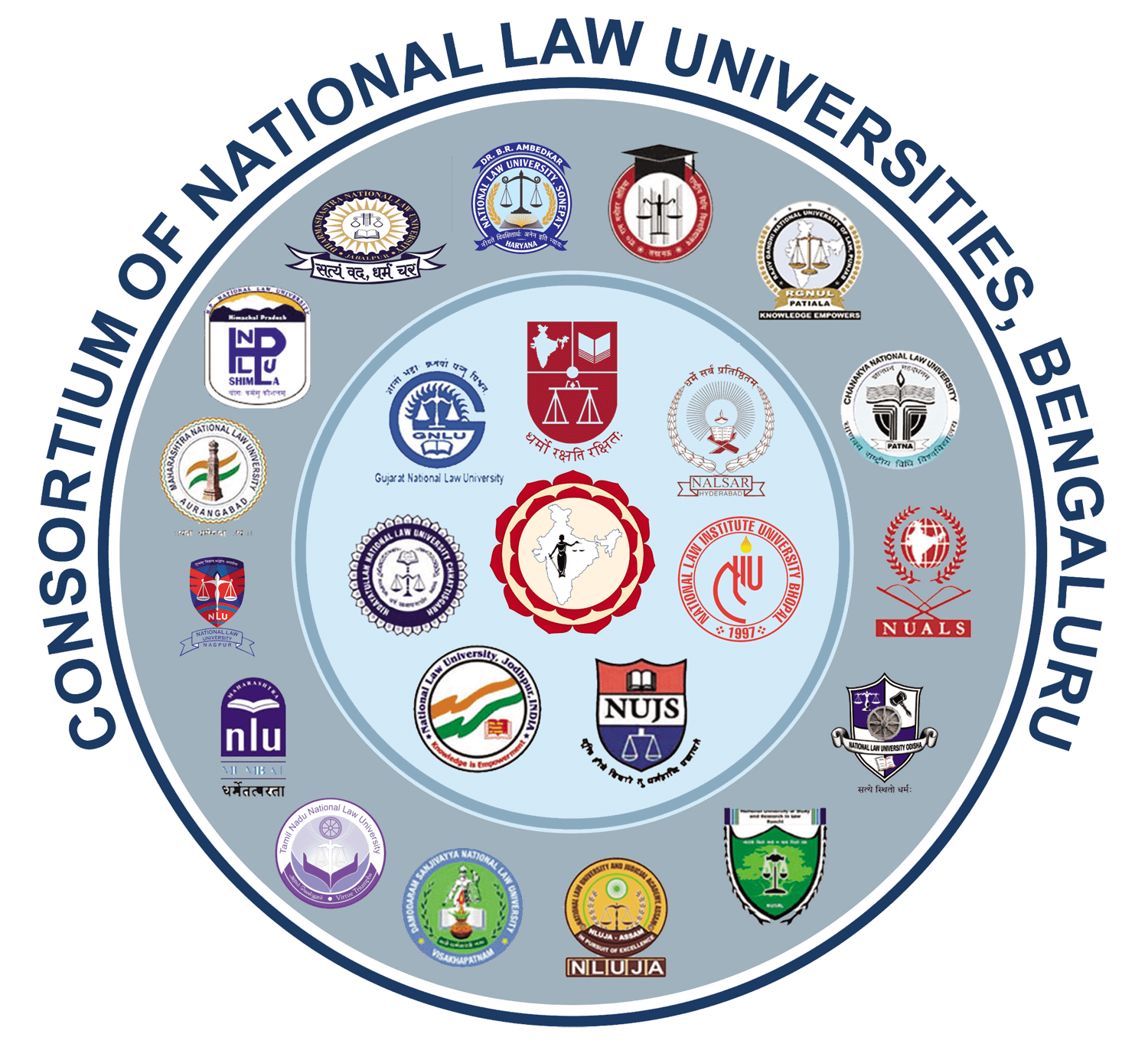Everything You Want To Know About CLAT

CLAT Overview
CLAT stands for the Common Law Admission Test. It is an all India entrance examination conducted on rotation by 16 National Law Universities (NLUs) for admissions to their under-graduate and post-graduate degree programmes (LL.B & LL.M).
The 16 participating NLUs in the order of their establishment are:
- National Law School of India University, Bangalore (NLSIU)
- National Academy of Legal Study & Research (NALSAR) University of Law, Hyderabad
- National Law Institute University, Bhopal (NLIU)
- The West Bengal National University of Juridical Sciences, Kolkata (WBNUJS)
- National Law University, Jodhpur (NLUJ)
- Hidayatullah National Law University, Raipur (HNLU)
- Gujarat National Law University, Gandhinagar (GNLU)
- Dr. Ram Manohar Lohiya National Law University, Lucknow (RMLNLU)
- Rajiv Gandhi National University of Law, Patiala (RGNUL)
- Chanakya National Law University, Patna (CNLU)
- National University of Advanced Legal Studies, Kochi (NUALS)
- National Law University Odisha, Cuttack (NLUO)
- National University of Study & Research in Law, Ranchi (NUSRL)
- National Law University & Judicial Academy, Assam, Guwahati (NLUJAA)
- Damodaram Sanjivayya National Law University, Visakhapatnam (DSNLU)
- The TamilNadu National Law School, Tiruchirappalli (TNNLS)
Eligibility
To be eligible to appear in CLAT, you should have obtained a Higher Secondary School/Intermediate (10+2) or its equivalent certificate from a recognized Board with not less than 45% marks in aggregate (40% in case of SC and ST candidates) and should be below 20 years of age as on 1st July 2022 (22 years in case of SC/ST and Persons with Disability (PWD) candidates).
If you are appearing in March/April or have appeared in the 10+2 examination and are awaiting results, you are also eligible to appear in the test. However, you are required to have passed the qualifying examination at the time of your admission and must be able to submit proofs in support of your claims.
Pattern of CLAT 2022 (Under-graduate Programme)
| Exam Description | |
|---|---|
| Total Marks | 150 |
| Number of multiple-choice questions of one mark each150 | 150 |
| Duration of Examination | Two hours (02:00 hours) |
| Subject areas with Weightage | |
|---|---|
| English including Comprehension | 20% |
| General Knowledge and Current Affairs | 25% |
| Elementary Mathematics (Numerical Ability) | 10% |
| Legal Aptitude | 25% |
| Logical Reasoning | 20% |
|
Note: There shall be a system of Negative Marking wherein 0.25 marks will be deducted for each of the wrong answer. |
|
The different subject areas of the examination:
1. English including comprehension
The English section will test the candidates’ proficiency in English based on comprehension passages and grammar. In the comprehension section, candidates will be questioned on their understanding of the passage and its central theme, meanings of words used therein etc. The grammar section requires correction of incorrect grammatical sentences, filling of blanks in sentences with appropriate words, etc.
2. General Knowledge and Currents Affairs
The candidates will be tested on their general awareness including static general knowledge. Questions on current affairs will test candidates on their knowledge of current affairs (broadly defined as matters featuring in the mainstream media between March 2019 to April 2020)
3. Mathematics
This section will test candidate’s knowledge on elementary mathematics, i.e. maths taught up to Class X.
4. Legal Aptitude
This section will test candidate’s interest towards study of law, research aptitude and problem solving abilities. Questions will be framed with the help of legal propositions (described in the paper), and a set of facts to which the said proposition has to be applied. Some propositions may not be “true” in the real sense (e.g. the legal proposition may be that any person who speaks in a movie hall and disturbs others that are watching the movie will be banned from entering any movie theater across India for one year). Candidates will have to assume the “truth” of these propositions and answer the questions accordingly.
5. Logical Reasoning
The purpose of the logical reasoning section is to test the candidate’s ability to identify patterns, logical links and rectify illogical arguments. It will include a wide variety of logical reasoning questions such as syllogisms, logical sequences, analogies, etc. However, visual reasoning will not be tested.
Participating Universities Websites
